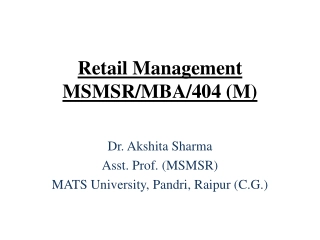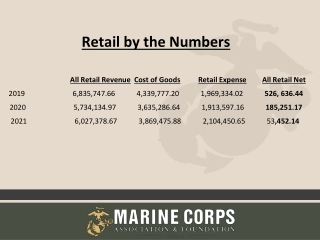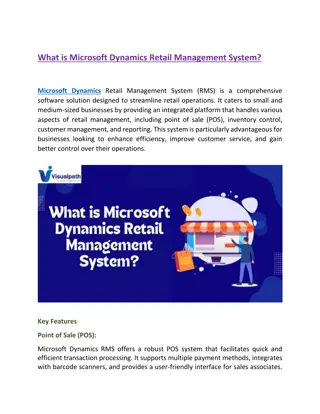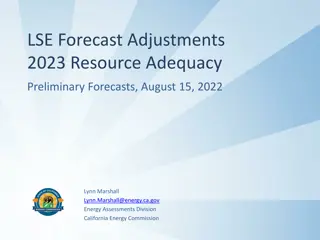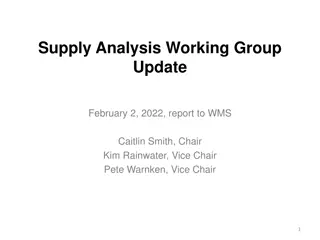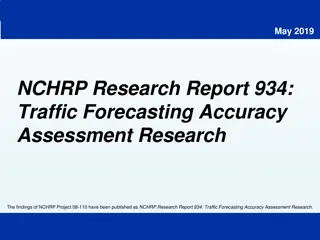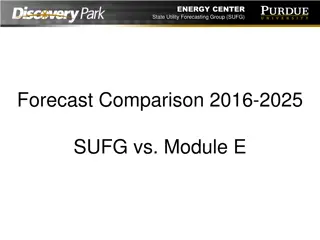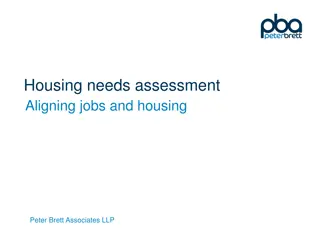Holiday Retail Forecasts and Trends for 2019
Retail forecasts for the 2019 holiday season predict varying increases in sales, with projections from NRF, eMarketer, Mastercard SpendingPulse, and Coresight Research. The season is shorter this year, leading to strategies like early promotions and discounts by retailers to entice consumers. Consumers are expected to spend different average amounts on holiday shopping, with preferences for both brick-and-mortar stores and online shopping. The impact of tariffs on Chinese goods is a factor influencing this year's holiday shopping landscape.
Download Presentation

Please find below an Image/Link to download the presentation.
The content on the website is provided AS IS for your information and personal use only. It may not be sold, licensed, or shared on other websites without obtaining consent from the author.If you encounter any issues during the download, it is possible that the publisher has removed the file from their server.
You are allowed to download the files provided on this website for personal or commercial use, subject to the condition that they are used lawfully. All files are the property of their respective owners.
The content on the website is provided AS IS for your information and personal use only. It may not be sold, licensed, or shared on other websites without obtaining consent from the author.
E N D
Presentation Transcript
Most Recent Retail Forecasts Since Media Group Online s Early Holiday Shopping 2019 Profilers, the National Retail Federation (NRF) has announced its forecast for holiday 2019 retail sales (November and December) is a 3.8% to 4.2% increase, which would total approximately $730 billion. eMarketer s projections, which also exclude travel, restaurants and other retail sectors as in the NRF forecast, could result in the first retail holiday shopping season with $1 trillion in total sales. The Mastercard SpendingPulse prediction isn t quite as robust, at +3.1% from November 1 to December 24 (or 3.8% without automotive and gasoline sales), compared to 5.1% during 2018. Coresight Research forecasts a 4.0% increase.
Holidays, Abbreviated As has been noted in many media reports, this holiday season is very unusual because it is 6 days shorter. Thanksgiving is as late as the calendar will allow, which has led some shoppers to start earlier this year while others are expected to wait until the last minute. According to a survey from Profitero, an e-commerce platform company, 25% of shoppers said they started during September, which includes the 45% who planned to start before November; however, 31% couldn t say when they would start. The shortest holiday shopping season possible isn t particularly good for retailers, especially if a heavy snowstorm occurs during one or more of the crucial weekends. Many retailers plan to promote larger discounts to motivate consumers to shop earlier.
The Season of Open Wallets and Red-Hot Credit Cards Unsurprisingly, numerous credible sources are predicting consumers will spend various average amounts during the 2019 holiday season. NRF forecasts an average of $1,047.83, with consumers 35 44 spending the most, or an average of $1,158.63. Deloitte s prediction is an average of $1,496 per household for all holiday spending, $511 of which will be for gifts. Deloitte also reported high spenders, or those spending more than $2,100, account for 60% of all holiday spending, and 65% are older than 40. The 1,500 US consumers Accenture surveyed said they would spend an average of $637, with 57% stating they would spend at the same level as 2018, but 28% expected to spend more than last year.
Brick-and-Mortar Stores Are First on the Shopping List According to Tinuiti s survey of more than 2,000 online participants during June/July 2019, 31.6% said they would shop in-store during the 2019 holiday shopping season, a 10.9% increase from 2018. The Tinuiti survey also revealed most survey respondents, or 44.8% would shop both primary channels, in-store and online, compared to approximately 46% during the 2018 season. Of those consumers who spend the most, 51.4% shop both in- store and online. Field Agent s survey of more than 4,000 US holiday shoppers found 38% of them said they are likely to shop at five or more brick-and-mortar stores for the 2019 holiday shopping season, with 23%, the most, at 3 stores, and 19% said 6 to 10 stores.
The Realities of the Season The tariffs the Trump administration has imposed primarily on Chinese goods have been a concern of retailers for some time, but many analysts think the impact on holiday shopping will be minimal. Some are more worried about consumer confidence. According to an AlixPartners survey, 20% of the respondents who said they would spend less during the holiday season said price increases of more than 10% from tariffs would result in them spending even less. Kantar, a data analytics company, reported retailers spent 6% less for 2018 holiday season advertising, or $3.7 billion, compared to $3.9 billion for 2017. Although retailers spent half of their holiday ad dollars on TV, total 2018 spending decreased 3%.
The Evolving Holiday Season Sustainability has become an important aspect of retail commerce for consumers and an Accenture survey found 50% would rather not use wrapping paper for gifts and almost 67% said they would have no problem with receiving unwrapped gifts. In the same survey, 50% of respondents said they would be acceptable to a slower shipping process to help reduce the negative environmental impact of the current faster shipping, which so many retailers, especially online, tout as a benefit. Deloitte s annual holiday study revealed more consumers are attracted to Cyber Monday (53%) than Black Friday (44%) discounts, with Gen Zers the largest percentage, at 65%, and then Millennials, 61%; Gen Xers, 49%; and Baby Boomers, 47%.
Advertising Strategies Based on the table of data from Tinuiti on page 4 of the Profiler, older holiday shoppers are more likely to have the largest spending budgets, which means TV is a must for holiday retailers, as it is the best medium to reach older adults. There is still time for retailers to schedule a special event to drive foot traffic: a tasting of non-alcoholic holiday beverages (with recipes for alcoholic holiday beverages posted on social media); live carolers with a sing-a-long session; etc. Help retailers/advertisers plan a Day-After-Christmas Sale, since December 26this a Thursday. Suggest they feature a special assortment of merchandise not offered before Christmas and not the typical after- holidays clearance items.
New Media Strategies Recommend retailers/advertisers check and update their listings on local search Websites/sources more than once during the holiday season, paying attention specifically to any reviews, especially negative ones, and responding to them immediately. Because there are the least number of holiday shopping days, shoppers will be rushed, which is an opportunity for local retailers to use the mobile channel to feature a weekend special offer so more shoppers make it a priority to visit the store for the offer. Use social media posts to promote support of and donations to the various charitable and community organizations holiday drives. Offering a discount to shoppers who bring a non-perishable food item to the store may be often promoted, but it still resonates with all.


